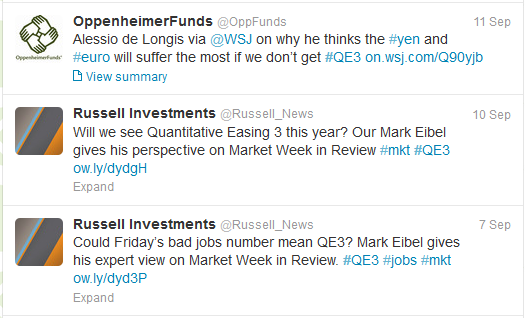Posted by Mike McLaughlin
on Jan 17, 2013,
in
Thoughts
, tagged with
alternatives,
PIMCO
Ignites ran an op-ed (subscription required) from Jon Short at PIMCO about the firm’s promotion of liquid alternative investments. Sometimes in reading a piece like this, I look for the natural contrarian question to ask, and in this case I found it when I reached the following statement:
To be sure, liquid alternative funds are and should remain a portfolio complement rather than a core holding for most investors.
This position has become the stock position of many asset managers. To paraphrase: “Alternatives are great, but you shouldn’t use too much of them (or use them the way an institutional investor does).”
I find this take difficult to reconcile, with the obvious question being: why shouldn’t alternative strategies form the core of an investment portfolio? As it turns out, I’ve already asked a version of this question before. It also turns out that there are pockets of the investment community pushing for alternatives as the foundation of portfolios.
But Mr. Short’s piece makes me further consider the marketing implications of this issue. Consider how Mr. Short continues his thought process by citing that alternative strategies often:
- Offer a go-anywhere approach to take advantage of the best investment opportunities
- Have low correlation to traditional equity and fixed income strategies
- Can be combined to customize a portfolio based on an investor’s goals and risk profile
These seem like the very things many investors are looking for. If alts are the best way to deliver these benefits, I’d expect some firms to be more aggressive in positioning how they should be integrated into some investors’ portfolios.
Of course, there may be data-driven research that confirms a cautious approach in allocating to alts (though I have yet to see firms cite it). And there are two very simple reasons why firms wouldn’t be more aggressive in positioning alts:
- Self-Interest: the majority of existing assets are tied up in traditional strategies
- Human Nature: gradual change is an easier story for people to accept than one centered on MAJOR upheaval
Even so, I ultimately think the discussion around alternatives and the types of roles they can play in portfolios needs to evolve from its current state. The current uniformity of the messages from most asset managers, and the disconnect between the substantial benefits of alts compared to the low recommended use of them, means there is a good opportunity for firms to have more differentiated, interesting discussions moving forward.








